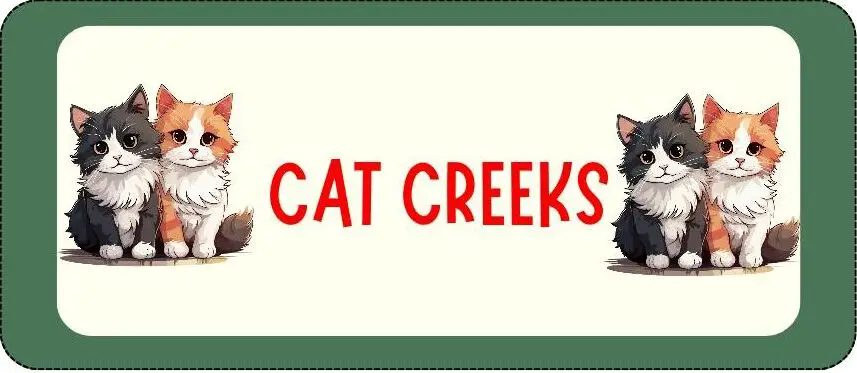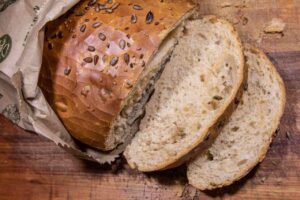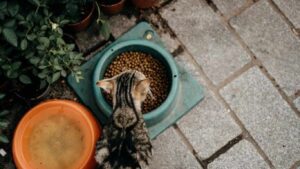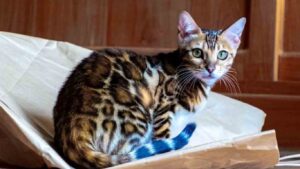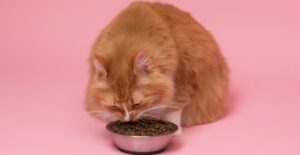Are you the proud parent of a Bengal cat and wondering if rice is a good addition to their diet? Well, you’ve come to the right place!
In this blog post, we’ll dive into the topic of whether rice is a suitable food for Bengal cats, so you can make an informed decision about what to feed your fur baby.
Let’s get started, shall we?
Is Rice Good for Bengal Cats?
Yes, rice can be included in the diet of Bengal cats as a source of carbohydrates.
However, rice is not nutritionally valuable for cats, including Bengal cats, as they are obligate carnivores and need to primarily consume meat for their nutritional needs.
While rice is not toxic to cats, it lacks essential nutrients for feline health and should not be a significant part of their diet.
Feeding rice to Bengal cats should be limited to small amounts, well-cooked, plain, and in conjunction with a balanced commercial cat food if necessary.
It is recommended to focus on meat-based foods for Bengal cats to ensure they receive the necessary nutrients for their well-being.
Can Bengal cats eat rice?
Yes, Bengal cats can eat rice as part of their diet, however, rice should only be given to them in small amounts and as an occasional treat.
It is important to ensure that the rice is fully cooked and plain, without any added spices, oils, or seasonings.
Rice should not be the main component of their diet, as Bengal cats require a balanced diet primarily consisting of high-quality cat food formulated for their nutritional needs.
Nutritional Value of Rice
Rice is a staple food that offers significant nutritional value. It is a great source of carbohydrates, providing energy for daily activities.
Additionally, rice contains essential vitamins and minerals such as iron, magnesium, and B vitamins.
Its low fat content makes it a healthy choice for those watching their Bengals weight.
Incorporating rice into your Bengal cat diet can contribute to a balanced and nutritious meal.
How to Prepare Rice and How to Feed Rice to Bengal cat
Remember, rice should not be the primary component of your Bengal cat’s diet.
It can be used as an occasional treat or to help with certain digestive issues, but a balanced and nutritionally complete cat food should always be the main source of their nutrition.
Let’s take a look at how to prepare rice and how to feed rice to Bengal cat:
Preparing Rice for Your Bengal Cat
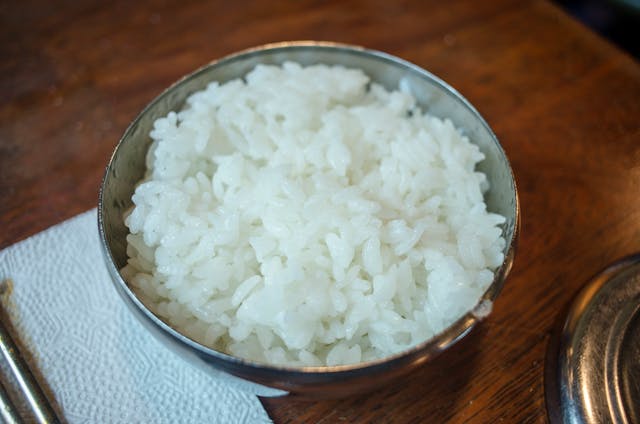
Here are some common steps to take:
Step 1: Gather the Ingredients and Tools
To prepare rice, you will need the following ingredients and tools:
- Rice: Choose a variety that suits your preference, such as jasmine, basmati, or long-grain rice.
- Water: Use clean, fresh water for cooking.
- Pot with a Lid: Select a pot that is large enough to accommodate the rice and water without overflowing.
- Measuring Cup: Use a measuring cup to ensure the right ratio of rice to water.
- Stove or Cooktop: You’ll need a heat source to cook the rice.
Step 2: Measure the Rice and Rinse – Using the measuring cup, determine the desired amount of rice you want to cook for your Bengals. For a typical serving, half cup of uncooked rice is usually sufficient for a Bengal cat. Once measured, place the rice in a fine-mesh sieve or colander and rinse it under cold water to remove any excess starch.
Step 3: Determine the Water Ratio – The amount of water needed may vary depending on the type of rice you’re using. As a general guideline, the ratio is usually 1:2, meaning one part rice to two parts water. However, it’s always a good idea to check the instructions on the rice packaging for specific water measurements.
Step 4: Combine Rice and Water in the Pot – Transfer the rinsed rice into the pot and add the appropriate amount of water based on the ratio you determined. Make sure the water completely covers the rice.
Step 5: Soak the Rice (Optional) – If you have the time, you can soak the rice for about 30 minutes before cooking. Soaking can help to improve the texture and reduce cooking time. However, this step is optional, and you can proceed to the next step if you prefer not to soak the rice.
Step 6: Cook the Rice – Place the pot with the rice and water mixture on the stove or cooktop. Set the heat to high and bring it to a boil. Once boiling, reduce the heat to low and cover the pot with a lid. Allow the rice to simmer gently for the recommended cooking time specified on the rice packaging. This duration can vary from 15 to 30 minutes, depending on the type of rice.
Step 7: Let the Rice Rest – Once the rice has finished cooking, turn off the heat and let it rest for about 5 to 10 minutes with the lid still on. This resting period allows the rice to absorb any remaining moisture and ensures that it becomes fluffy and light.
Step 8: Fluff the Rice – After the resting period, remove the lid and use a fork or a rice paddle to gently fluff the rice. This helps to separate the grains and prevent clumping.
Feeding Rice to a Bengal Cat

Here’s some steps to take:
Step 1: Check with a Veterinarian – Before introducing any new food into your Bengal cat’s diet, it’s important to consult with a veterinarian. They can provide guidance and ensure that rice is suitable for your Bengal cat’s specific dietary needs.
Step 2: Cook Plain Rice – Prepare plain rice following the steps mentioned above, without adding any salt, spices, or seasonings. It’s crucial to avoid any ingredients that may be harmful to your Bengal cat.
Step 3: Let the Rice Cool – Allow the cooked rice to cool down completely before feeding it to your Bengal cat. This ensures that it’s at a safe temperature and prevents any potential burns or discomfort.
Step 4: Serve Small Portions – Start by introducing small portions of rice to your Bengal cat’s diet. Monitor their response and observe any signs of digestive issues or allergies. Some Bengal cats may not tolerate rice well, so it’s essential to keep an eye on their well-being.
When you want to feed, you can add 3 to 4 tablespoons of the plain cooked rice into your Bengal cat regular food.
Step 5: Mix Rice with Regular Cat Food – To make your Bengal cat eating rice easier, you can mix a small amount of cooked rice with your Bengal cat’s regular cat food. Gradually increase the ratio of cat food to rice over time until your cat becomes accustomed to the new addition.
Step 6: Monitor Your Cat’s Health – It is important to keep in mind that while rice can be a part of a Bengal cat’s diet, it should not replace their regular cat food. Monitor your cat’s health as some Bengal cats may have sensitivities or allergies to grains, so it’s crucial to observe any signs of digestive upset or adverse reactions.
Related: Why is my Bengal cat eating so much.
Different Ways of Feeding Rice to Bengal Cats
When it comes to cooking for your Bengal cat, white rice can be a great addition to their meals. It’s easily digestible and can provide them with the energy they need.
Here are three safe and simple recipes that you can try:
Plain Cooked White Rice
I will keep it short as you already know how to cook plain cooked white rice.
Here’s what you need to know:
Ingredients: 1 cup of white rice, 2 cups of water.
- Instructions:
- Rinse the rice thoroughly to remove any excess starch.
- In a pot, bring the water to a boil.
- Add the rice to the boiling water and reduce the heat to low.
- Cover the pot and let the rice simmer for about 15-20 minutes, or until the water is absorbed and the rice is cooked.
- Let the rice cool before serving it to your Bengal cat.
Rice with Chicken Broth
This is also simple to achieve, here’s how:
Ingredients: 1 cup of white rice, 2 cups of chicken broth (low sodium).
- Instructions:
- Rinse the rice thoroughly.
- In a pot, bring the chicken broth to a boil.
- Add the rice to the boiling broth and reduce the heat to low.
- Cover the pot and let the rice simmer for about 15-20 minutes, or until the liquid is absorbed and the rice is cooked.
- Allow the rice to cool before feeding it to your Bengal cat. Make sure the broth is low in sodium, as too much salt can be harmful to cats.
Rice with Steamed Fish
Ingredients: 1 cup of white rice, 2 cups of water, 4 ounces of boneless, skinless fish fillet.
- Instructions:
- Rinse the rice thoroughly.
- In a pot, bring the water to a boil.
- Add the rice to the boiling water and reduce the heat to low.
- While the rice is cooking, steam the fish until it’s fully cooked and flaky.
- Once the rice and fish are cooked, let them cool before serving them to your Bengal cat. Flake the fish into small pieces and mix it with the rice for added flavor and nutritional value.
Risks and Benefits of Feeding Rice to Bengal Cats
Feeding rice to Bengal cats can have both risks and benefits. Let’s explore them further:
Risks
Risks: Bengal cats are obligate carnivores, meaning their bodies are designed to thrive on a meat-based diet.
Feeding them too much rice can lead to nutritional imbalances, as rice lacks essential nutrients found in animal proteins. This may result in malnutrition or other health issues.
Risks: Bengal cats are prone to developing food allergies or sensitivities. Introducing rice into their diet may increase the risk of allergic reactions or gastrointestinal upset. It’s important to monitor their response to rice and consult with a veterinarian if any adverse reactions occur.
Risks: Overfeeding rice to Bengal cats can contribute to weight gain and obesity.
As rice is high in carbohydrates, excessive consumption can lead to an imbalance in their diet and potential health problems associated with obesity, such as diabetes or joint issues.
Benefits
Benefits: Rice can be a helpful addition to homemade cat food recipes, providing texture and variety. It can also act as a filler ingredient when combined with other nutritious ingredients, ensuring the cat feels full without compromising their overall health.
Benefits: Rice can be useful in certain situations, such as when a Bengal cat is experiencing digestive issues or recovering from an illness. Its bland nature can help soothe the stomach and provide temporary relief.
Benefits: In small quantities, rice can be a safe and easily digestible source of carbohydrates for Bengal cats. It can provide energy and help with digestion. Rice also contains some vitamins and minerals that can complement a well-balanced diet.
Alternatives to Rice in a Bengal Cat’s Diet
When it comes to a Bengal cat’s diet, there are several alternatives to rice that can be considered.
One option is to include high-quality proteins such as chicken, turkey, or fish, which are rich in essential amino acids.
Another alternative is to incorporate vegetables like carrots or spinach, which provide important vitamins and minerals.
Additionally, including small amounts of fruits like blueberries or apples can offer natural antioxidants.
Another option is to introduce grains like quinoa or barley, which can provide fiber and energy.
Lastly, it’s important to consult with a veterinarian to ensure a well-balanced and nutritionally complete diet for your Bengal cat.
Conclusion
In conclusion, rice can be a beneficial addition to a Bengal cat’s diet. It provides a source of carbohydrates and energy, and can aid in digestion and bowel regularity. However, it’s important to remember that rice should be cooked and served in moderation, alongside a balanced diet that includes high-quality protein sources for optimal feline health.
Related: Reasons your Bengal cat is not eating.
Frequently Asked Questions
Let’s take a look at some questions and answers:
Is rice a suitable food option for Bengal cats?
While rice can be included in a Bengal cat’s diet, it is important to understand that cats are obligate carnivores, which means their bodies are designed for a meat-based diet. Bengal cats, being descendants of wild cats, have similar dietary requirements. While rice does provide carbohydrates, it should not be the primary component of their diet. A balanced diet for Bengal cats should consist of high-quality protein sources, such as lean meats or specially formulated cat food, along with essential nutrients.
Can rice be harmful to Bengal cats?
Rice itself is not necessarily harmful to Bengal cats, but it should be given in moderation. Feeding a Bengal cat excessive amounts of rice can lead to nutritional imbalances and weight gain. Cats lack the necessary enzymes to efficiently break down and digest carbohydrates like rice. Overconsumption of rice can result in digestive issues, including diarrhea. Therefore, it is essential to prioritize a diet that is rich in animal-based proteins and adequately meets the nutritional needs of Bengal cats.
Are there any benefits to including rice in a Bengal cat’s diet?
In small quantities, rice can provide some benefits to Bengal cats. It can be a source of energy and fiber. Additionally, rice can be useful in certain situations, such as when a cat has a sensitive stomach or is recovering from an illness. In such cases, plain, cooked rice can be offered as a temporary dietary option. However, it is crucial to consult with a veterinarian before making any significant changes to your Bengal cat’s diet or introducing new food items.
What are some alternative food options for Bengal cats?
Bengal cats thrive on a diet that is high in animal-based protein. Instead of relying on rice, you can consider feeding your Bengal cat a balanced diet consisting of high-quality commercial cat food that is specifically formulated for their nutritional needs. Look for cat food brands that list real meat as the primary ingredient and avoid those that contain excessive fillers or artificial additives. If you prefer a homemade diet, consult with a veterinarian or a feline nutritionist to ensure that the diet meets all the necessary nutritional requirements for your Bengal cat’s optimal health.
